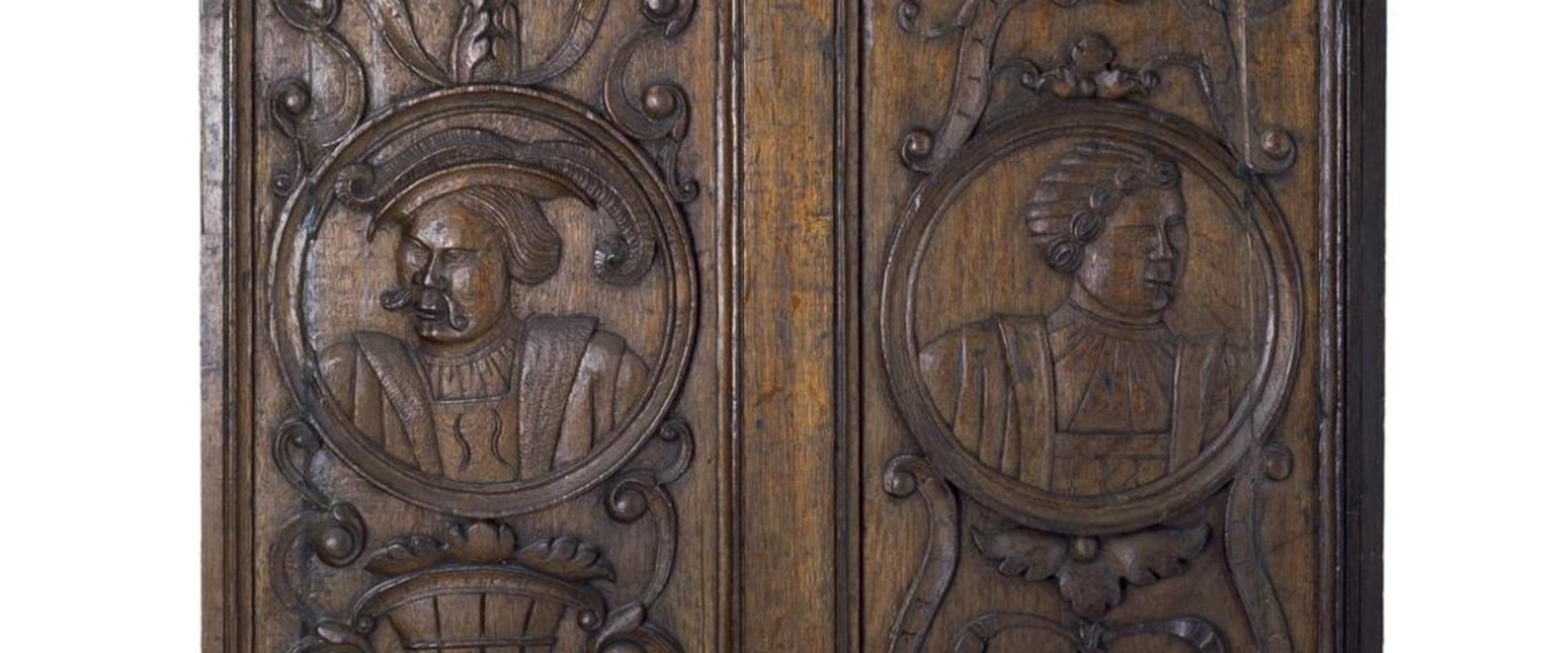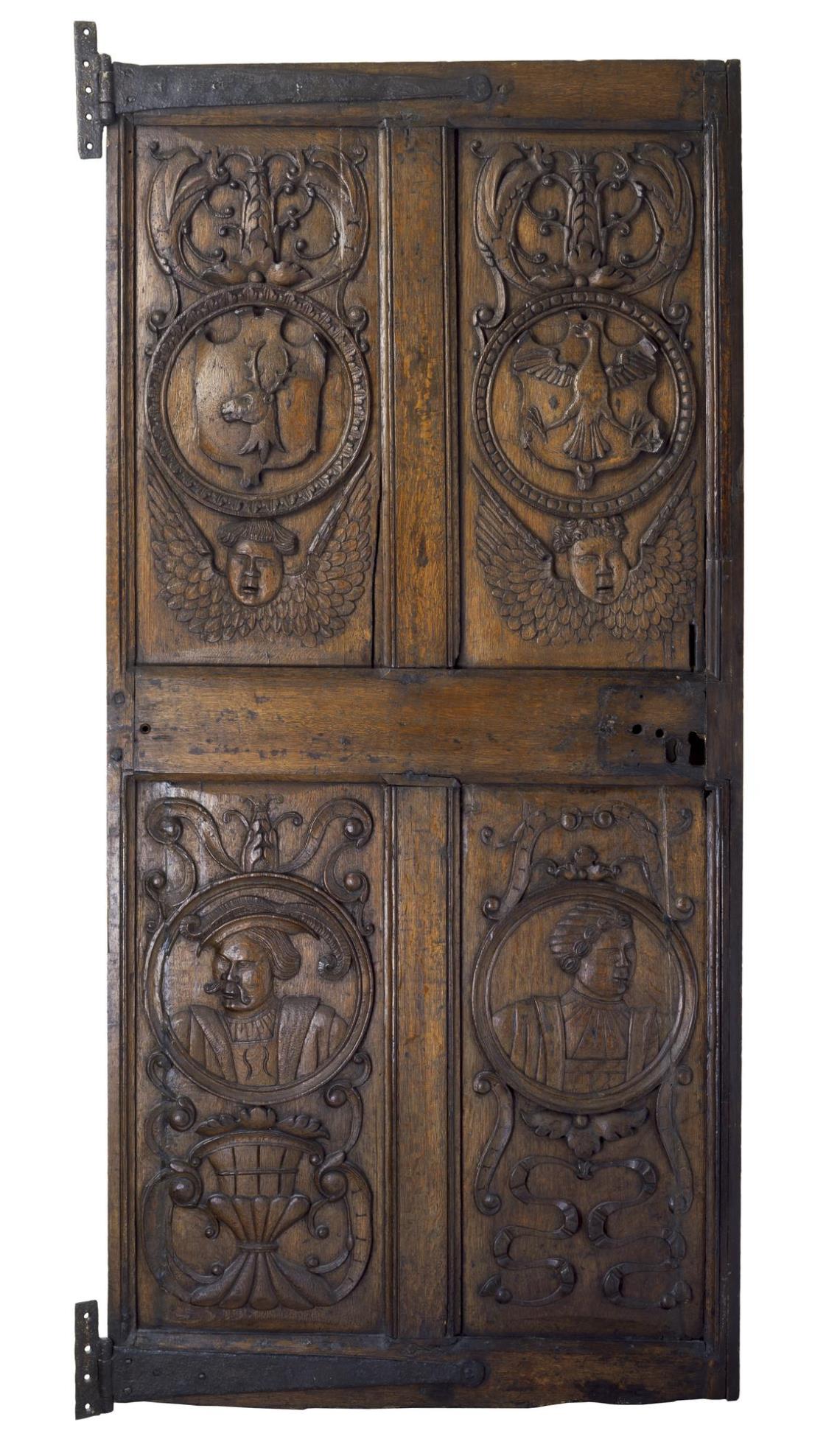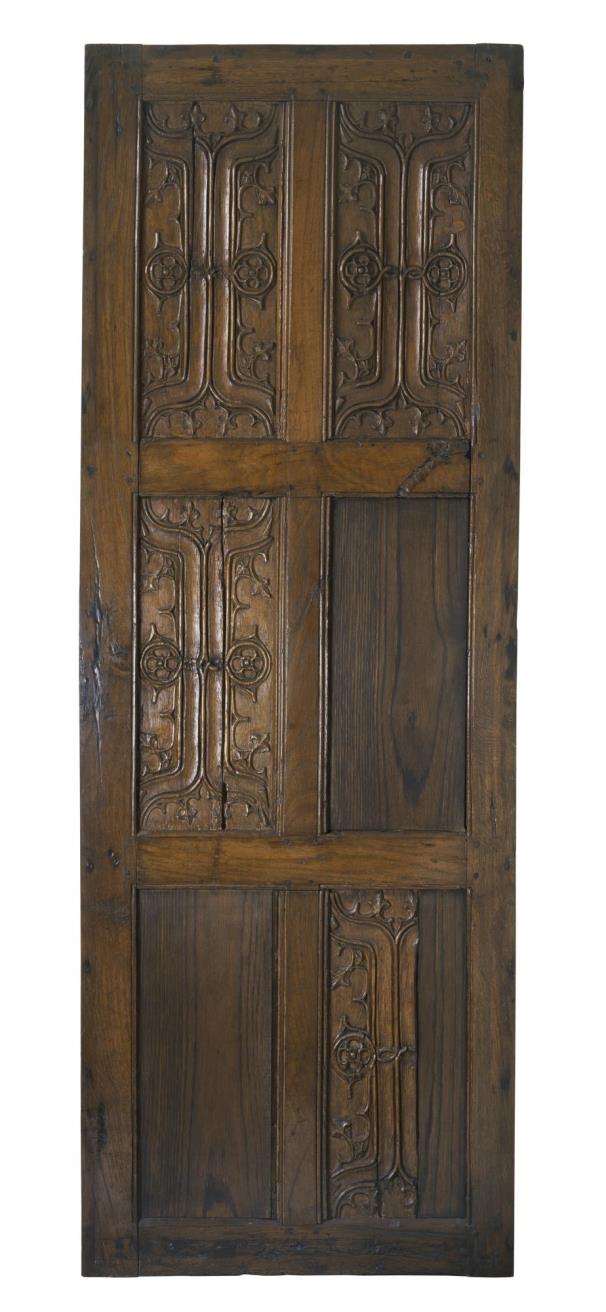Key in a search term below to search our website.
Key in a search term below to search our website.

When medieval buildings in Blyth’s Close off Edinburgh’s Castlehill were demolished, these pieces - associated with Mary of Guise - were rescued.
Possible Mary of Guise, who was crowned queen at Holyrood Abbey on 22 February 1540. Mary was the second wife of James V and mother of Mary, Queen of Scots. She may have lived in the house between 1542 and 1554.
From 1557 the house was occupied by Alexander Acheson of Gosford, a merchant and local landowner, and his wife Helen Reid. Their coats of arms were added to the door.
The close was demolished in 1845-46 to provide a site for the Assembly Hall and New College.


““The only other curious object in this part of the mansion was the door of one of the wretched apartments – a specimen of carving, bearing all the appearance of having been contemporary with the building, and containing, besides other devices, bust portraits of a gentleman and lady. This is now in the possession of the Society of Antiquaries of Scotland.”- “Traditions of Edinburgh” by Robert Chambers, 1868
After the birth of her daughter Mary and her husband’s death in 1542, Mary of Guise wanted to be close to the centre of power. The Blyth's Close house, near Edinburgh Castle and not far from the Palace of Holyroodhouse, may have been her Edinburgh base.
She was a skilful politician with an influential role, although she did not have real power until she became regent for her daughter Mary in 1554.
As regent, she was the first woman to rule in Scotland and she no longer needed her own house in Edinburgh.
Mary ruled as regent until her death at Edinburgh Castle in 1560.

Steel key with bow composed of two Cs and cross fleury surmounted by a crown, from Mary of Guise's house, Lawnmarket, Edinburgh: Scottish or English, 16th century